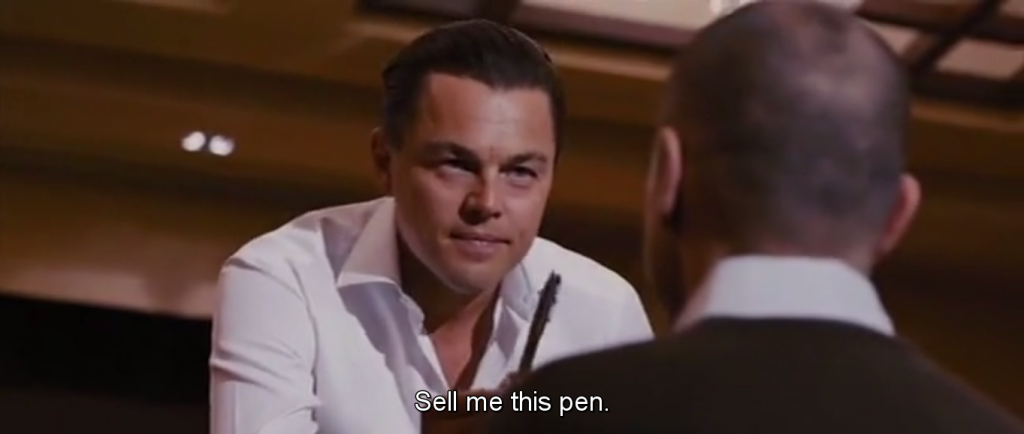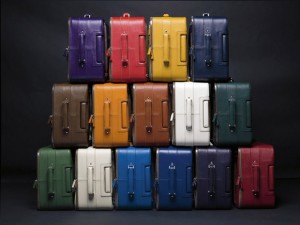 In my role as a pre-sales consultant, I’m always on the lookout for ways to improve my skills and myself. Reading this article has been enlightening, allowing me think objectively about how I can improve the way I work. The points mentioned in this article really resonate with my experience and interaction with customers, and while I may not be a true salesman (thank God), they are fundamental to any sales interaction.
In my role as a pre-sales consultant, I’m always on the lookout for ways to improve my skills and myself. Reading this article has been enlightening, allowing me think objectively about how I can improve the way I work. The points mentioned in this article really resonate with my experience and interaction with customers, and while I may not be a true salesman (thank God), they are fundamental to any sales interaction.
The article urges us to cover these four points in our sales interactions:
1) Gather information
2) Respond to information
3) Deliver information (building on the response)
4) Ask for a response (close)
These four points are steps or techniques that tell the listener that you are not only listening to them, but can help them identify and address needs that they have (even if they might not know it at the start). It jives with my personal belief that selling is more about meeting needs and showing value where people can benefit, rather than just hitting numbers.
To a significant degree, I still grapple with this delicate balance of addressing needs and achieving targets. While I enjoy the interaction, mobility and flexibility that a sales role provides, I still struggle to be fully comfortable with selling. Perhaps it is because of my own experiences with salesmen that my perception of sales is fundamentally skewed to the negative. Having seen this, this and this among many other sources and articles I’ve read over the years, I find it hard to think of the smooth talker who is motivated mainly by numbers, as someone who is making the world a better place, and bringing value to others.
I think it boils down a lot to our internal motivation. To me, I am personally motivated to see needs identified and addressed, which often leads to closure of sales. This is my preferred method of selling, and I would rather underachieve and do a good job meeting needs than to hit my numbers but compromise on my beliefs. I am very uncomfortable misleading (not necessarily lying) customers with the sole intention of closing a deal while knowing that what I am selling is unlikely to meet their needs. I know that others would probably have much less scruples, and the internal motivation of wanting to achieve their numbers might drive them to mislead, and even lie, to do so. It is this attitude that I find most repugnant, and the prime reason I can never be totally at ease in my role.
 I’ve written a little about personality types before, and based on mine, I have a strong value system, living according to what I feel is right. To me, FEELING RIGHT is very important, and I find it difficult to compromise on my ideals. This might explain why I don’t have an easy time reconciling the “grey areas” of selling where I am unsure if I am pure in my intentions. I have high expectations of myself, and if I cannot be sure that my internal moral compass is correctly aligned, I would not be at peace with myself and my actions.
I’ve written a little about personality types before, and based on mine, I have a strong value system, living according to what I feel is right. To me, FEELING RIGHT is very important, and I find it difficult to compromise on my ideals. This might explain why I don’t have an easy time reconciling the “grey areas” of selling where I am unsure if I am pure in my intentions. I have high expectations of myself, and if I cannot be sure that my internal moral compass is correctly aligned, I would not be at peace with myself and my actions.
Reading articles like this makes me wonder if the “problem” lies with me. Naturally, I don’t think I’m cut out for a full sales role, at least not from a temperament / personality perspective. However, I must admit being able to earn a good commission is exciting and can be a good motivator, at least for a period. Thus far, I find my situation tolerable, although things may not be the same in a more challenging market. For now, I’m still going to try to sell that pen the best way I know how, and make sure I help others know that I can help them.
That’s the kind of sales I want to do.





 Travel insurance is another thing that’s important. I had the unfortunate experience of having my luggage misplaced on connecting flights, and this has happened more than once! I’ve learned to make it a point to get travel insurance whenever taking more than one flight as there is actually quite high a risk that you will land without your luggage. On my last trip to Montreal, when I had two transfers to make, my luggage was actually stuck in Hong Kong, and it took more than 72 hours to get it delivered to me. Thankfully, the airline was kind enough to authorize me a reimbursement of USD300 for my troubles, but it was a very VERY tedious process. I could have easily made that claim and avoided all that hassle had I got travel insurance (something my HR / Admin staff neglected to purchase together with my flight). Of course it may not happen to you, but it is a crappy feeling to arrive at your destination, half way around the globe, only to find you do not have your luggage with you. I was there for two weeks, and thank GOD it wasn’t winter!
Travel insurance is another thing that’s important. I had the unfortunate experience of having my luggage misplaced on connecting flights, and this has happened more than once! I’ve learned to make it a point to get travel insurance whenever taking more than one flight as there is actually quite high a risk that you will land without your luggage. On my last trip to Montreal, when I had two transfers to make, my luggage was actually stuck in Hong Kong, and it took more than 72 hours to get it delivered to me. Thankfully, the airline was kind enough to authorize me a reimbursement of USD300 for my troubles, but it was a very VERY tedious process. I could have easily made that claim and avoided all that hassle had I got travel insurance (something my HR / Admin staff neglected to purchase together with my flight). Of course it may not happen to you, but it is a crappy feeling to arrive at your destination, half way around the globe, only to find you do not have your luggage with you. I was there for two weeks, and thank GOD it wasn’t winter!